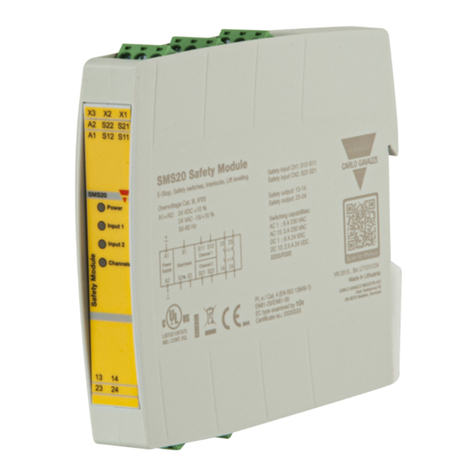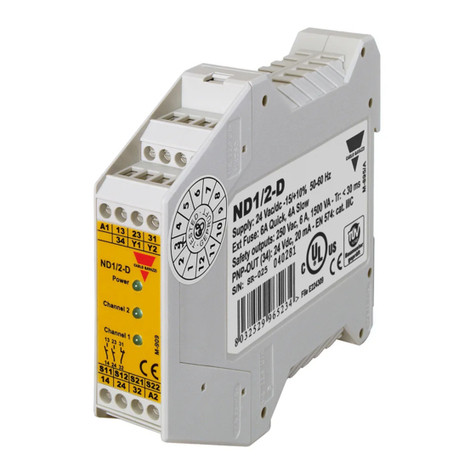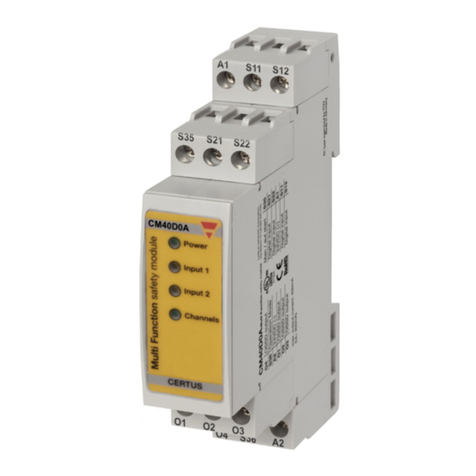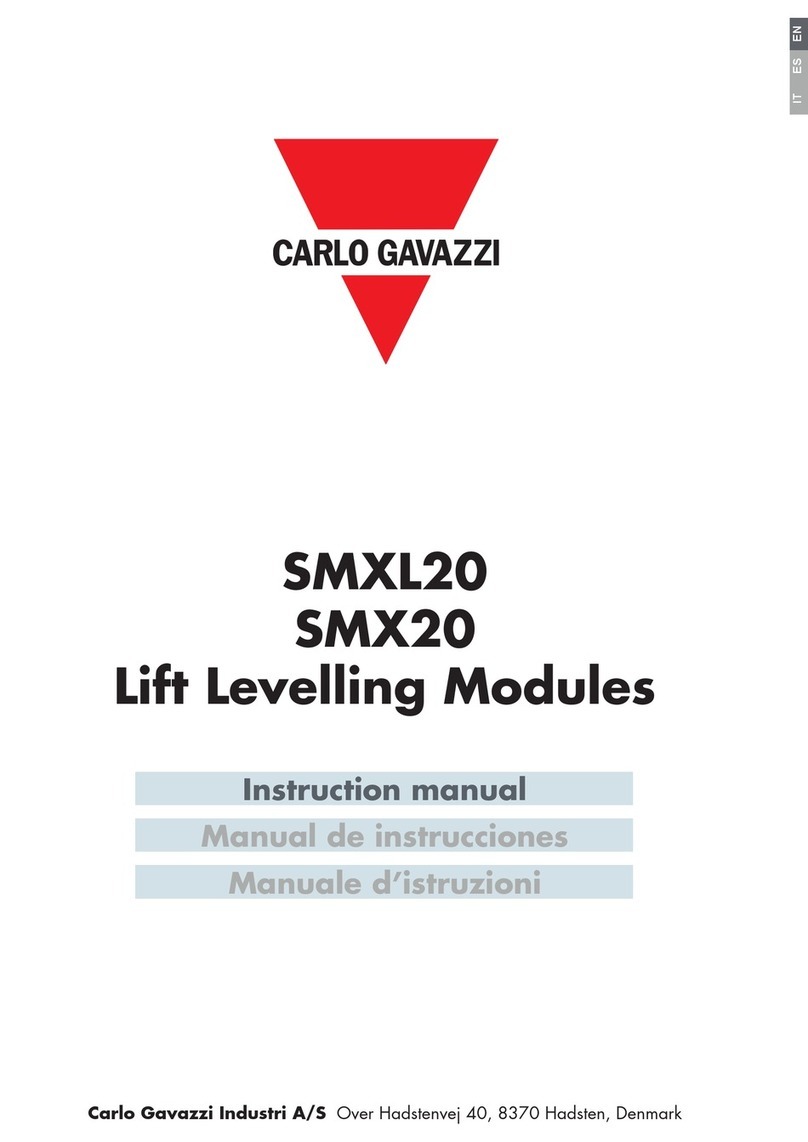
FUNZIONAMENTO
Se impiegato con riarmo manua-
le, alla chiusura del contatto di
START, con S1 e S2 azionati, il
modulo chiude le uscite sicure
(NSO13DB apre l’uscita ausiliaria).
Con riarmo automatico, invece,
l’azionamento sia di S1 che di S2
determina la chiusura delle uscite
sicure (NSO13DB l’apertura dell’u-
scita ausiliaria).
I LED CH1 e CH2 si accendono
in corrispondenza della chiusura
delle uscite sicure.
Il rilascio anche di un solo contatto
in ingresso (S1 e/o S2) determina
l’immediata apertura delle uscite
sicure, la chiusura dell’uscita ausi-
lairia per il modulo NSO13DB e lo
spegnimento del/dei LED relativi.
Una successiva richiusura delle
stesse è possibile solo dopo aver
rilasciato e nuovamente azionato
entrambi i contatti in ingresso (ed
attivando lo START, nel caso di
riarmo manuale).
Nella versione con riarmo manua-
le controllato è necessario che,
tra la chiusura degli ingressi e la
pressione del pulsante di START
trascorra un tempo di almeno 500
ms. Uguale intervallo deve tra-
scorrere tra l’apertura del pulsante
di START e la sua richiusura nel
caso di chiusura degli ingressi a
START già premuto.
Inoltre un eventuale incollaggio del
pulsante NO di START blocca il
modulo, impedendone la chiusura
delle uscite sicure.
MESSA IN SERVIZIO
Deve essere fatta ad ogni instal-
lazione, modifica nel cablaggio e
periodicamente, eseguendo tutte
ed in sequenza le fasi di seguito
descritte, in condizione di assenza
di pericoli per gli operatori.
FASE 1 Controllare l’integrità, l’in-
stallazione, il posizionamento e
il corretto funzionamento di tutti
i dispositivi in ingresso o uscita
del modulo, nonché lo stato dei
cablaggi.
FASE 2 Alimentare il modulo: il
LED si accende, e resta acceso in
tutte le fasi successive, mentre i
LED CH1 e CH2 sono spenti.
Azionare i contatti sugli ingressi:
le uscite sicure sono aperte, i LED
CH1 e CH2 sono spenti (in caso
di riarmo automatico, CH1 e CH2
sono accesi e le uscite sicure
chiuse).
Chiudere il contatto di START: le
uscite sicure sono chiuse, i LED
CH1, CH2 sono accesi.
FASE 3 Rilasciare entrambi i con-
tatti di ingresso: le uscite sicure
aprono ed i LED CH1, CH2 sono
spenti.
Durante la FASE 2, verificare
che, in configurazione di riarmo
manuale, il solo azionamento degli
ingressi, senza la chiusura del
contatto di START, non determini
la chiusura delle uscite sicure.
5

































